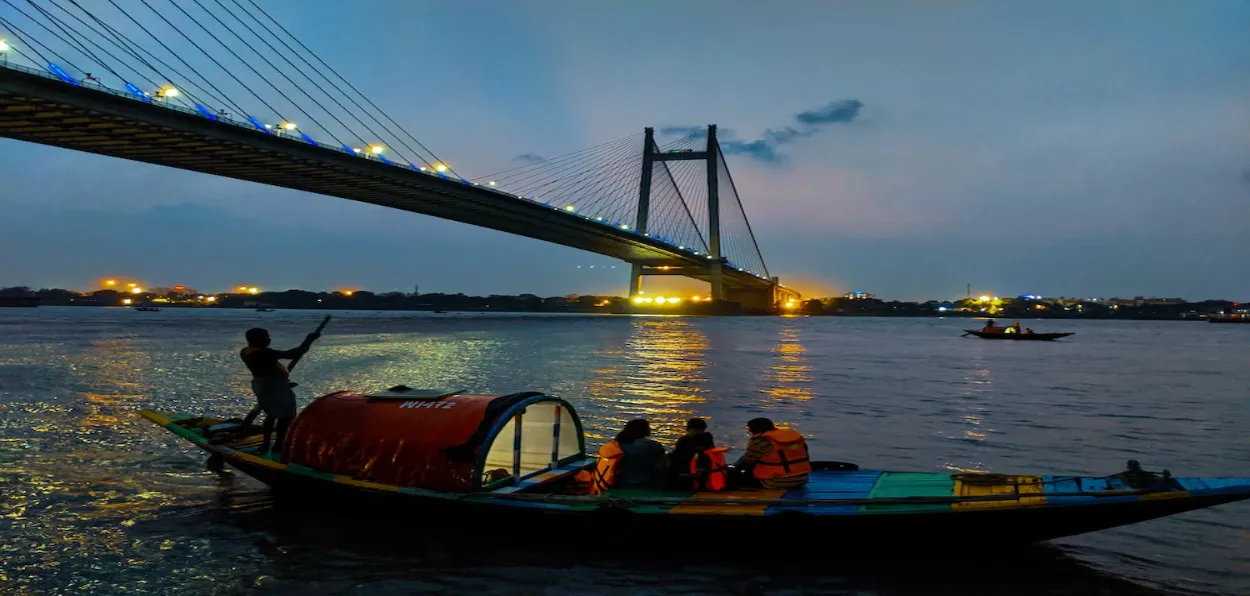
Rita Farhat Mukand
One could say it’s a matter of opinion but no city in India holds as much embracing cosmopolitan charisma as Kolkata. Walking down the bustling glittering city, which incidentally was the first city to build a metro, kicking out time-killing traffic jams, one finds themselves immersed in a conglomeration of cultures melting and warming in a gigantic cauldron giving the city an unusual flavour of delectability, fun, joy, variety, jumble, rumble, spice, and the people are generally nice.
The Sunday Longread
The city's advantageous position near the Bay of Bengal, rich in minerals, soil, and crops subterranean springs, coupled with its efficient transportation network encompassing road, rail, and waterways, renders it an optimal selection for businesses seeking to establish warehouses in the region. It is the city of great temples, old mosques, ancient churches, Buddhist gompas, Jewish synagogues, and other religious structures, the land of poets, thinkers, writers, and philosophers, the heart of delicious Bengali food, Mughal and Continental cuisines, the unbeatable biryanis from Shiraz and other haji biryanis uncomparable to even Hyderabadi biryani in my opinion, finger-licking street food, the best Chinese delicacies in India, smart metro, gardens, Eden Garden, the center for football, museums, ancient forts, and ancient historic structures, IIM, and much more.
During the 1980s, there was a sudden influx of Iranians all over the city who shone out outstandingly with their red-golden hair, bright faces, and sharp refined features lending a different air to the city. Foreigners always add that sense of mystery and wonder to a place as it raises levels of curiosity about them. Most of the Iranians were exceedingly wealthy but they desperately needed money as most of them fled Iran with a few possessions and precious treasures.
In the urgent need of the hour for money, some sold their jewellery to Indians for a song. In one particular case, a twenty-year-old girl Azlee needed cash and sold her diamond and sapphire ring set in platinum for just a few thousand. Why did the Iranians flee to India in the 1980s one may ask? It all started with the Iranian Revolution, also known as the Islamic Revolution, which was a series of events in 1979 resulting in the overthrow of the Pahlavi Dynasty. This led to the establishment of the present-day Islamic Republic of Iran, replacing the Imperial State with the theocratic government of Ayatollah Ruhollah Khomeini, marking the formal end of Iran's historical monarchy.
Khomeini’s brutal theocratic reign forced Iranians to flee to neighboring countries and India was one of the main countries they took refuge in. Kolkata being 3,571 kilometers from Iran was one of the top cities they took shelter in.
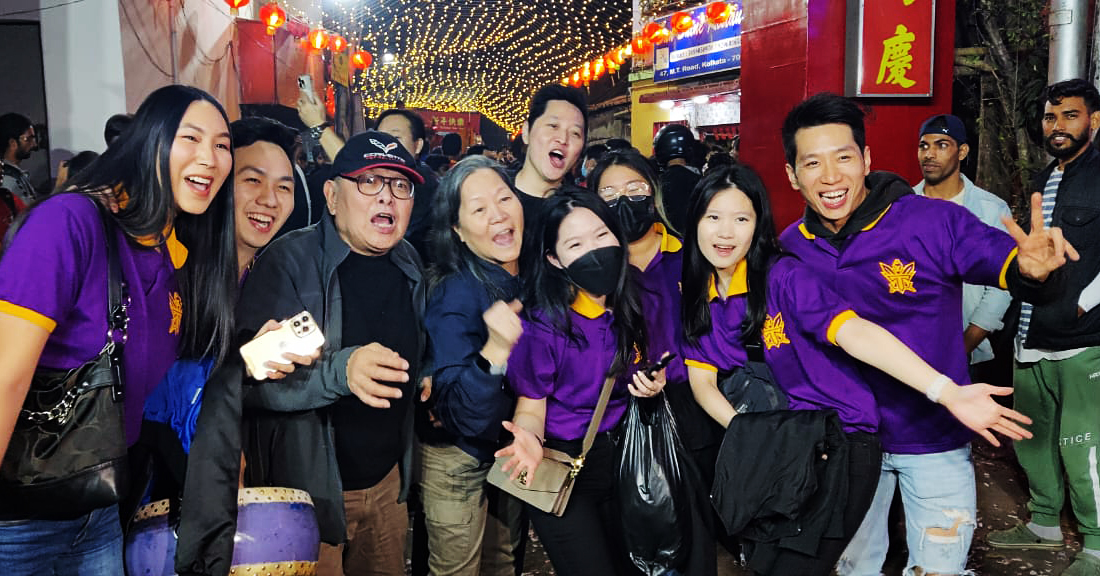 Chinese origin people celebrating Chinese New year in Kolkata
Chinese origin people celebrating Chinese New year in Kolkata
Most of the Iranians in Kolkata lived in the Young Women's Christian Association (YWCA) or the Young Women's Christian Association ( YMCA) which were very affordable in those days. Many rented out rooms and stayed as paying guests. It was relatively peaceful for the Iranians to blend into Kolkata’s caring culture and they felt comfortable in no time and made good friends and bonds with Indians.
Ancient history reveals that Kolkata served as a thriving trading center long before the Delhi Sultanate, Mughals, Portuguese, French, or British arrived. Its roots trace back to the Maurya and Gupta periods, with references even found in the ancient epic Mahabharata. Kalikata is thought to be the ancient name of the city, originating from the Bengali term 'Kalikshetra,' translating to "Ground of Goddess Kali." Another belief suggests the city's name is tied to its initial settlement location on a canal (khal). The British adopted an anglicized version, Calcutta, from the Bengali name Kalikata. In 2001, the Indian government officially changed the name from Calcutta to Kolkata.
The Bengali people have a diverse origin, resulting from the convergence of various communities over many centuries. The earliest inhabitants are believed to be the Vedda from Sri Lanka, later joined by Mediterranean peoples speaking Indo-European languages. In the eighth century, individuals of Arab, Turkish, and Persian descent began entering the region, and over time, these groups merged to form the Bengali people.
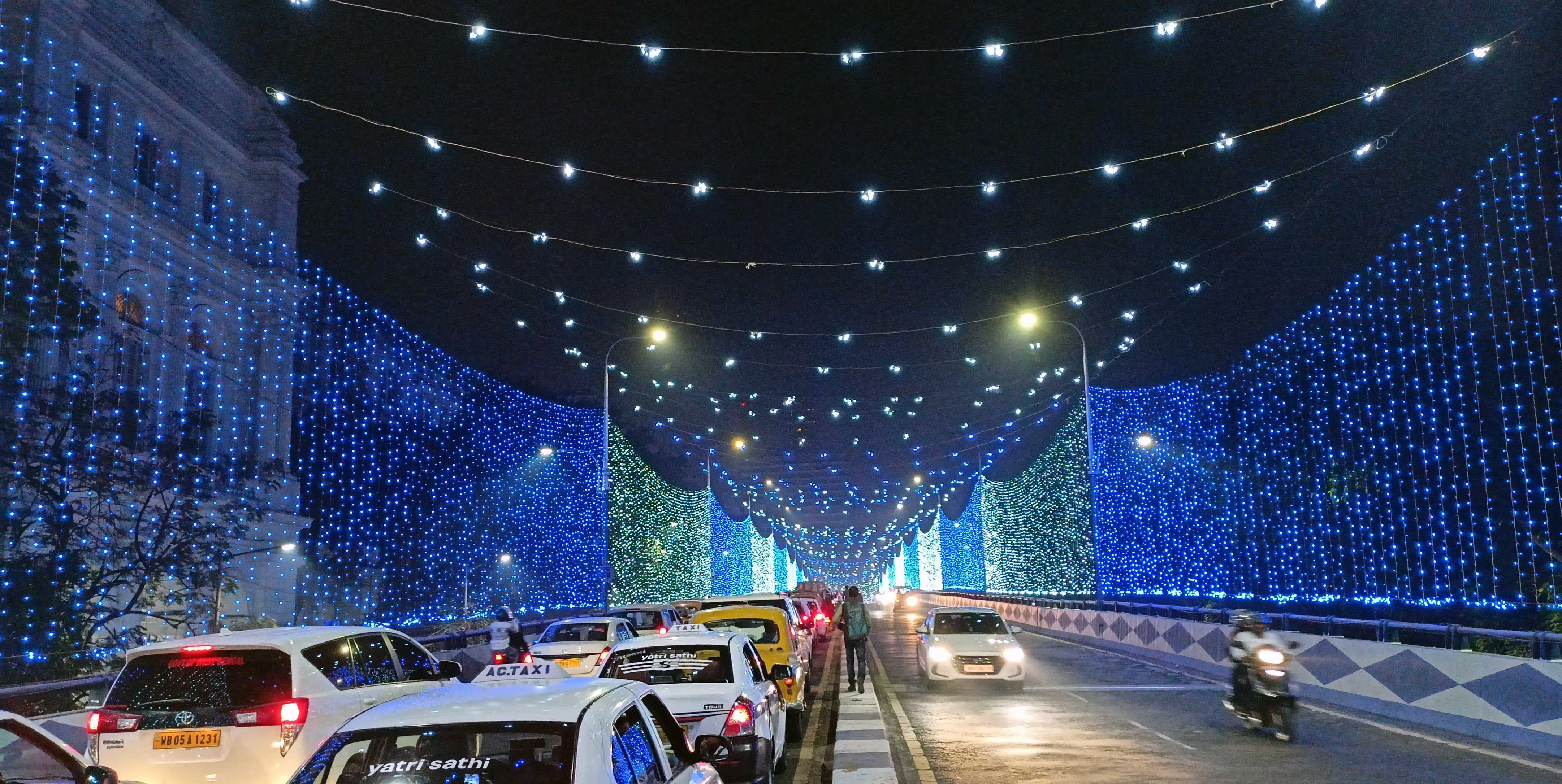 Park Street of Kolkata during Christmas and New Year
Park Street of Kolkata during Christmas and New Year
In Bangladesh, the majority of Bengalis practice Sunni Islam, whereas in West Bengal, most follow Hinduism. This religious distinction can be traced back to the 13th century when Muslim forces invaded from the northwest. Initially, Bengal had a mix of Hindus and Buddhists, but with the arrival of Muslims, eastern Bengal saw a majority conversion to Islam, while Hinduism became predominant in the western region.Later, the Bengal Sultanate, also known as Shahī Baṅgala stepped in.
It was a late medieval South Asian sultanate thriving in the Bengal region from the 14th to the 16th century. Renowned for its robust trade and strength, it eventually faced decline due to the Suri Empire's interregnum, Mughal conquest, and fragmentation into smaller kingdoms. This Sunni Muslim monarchy had a diverse elite comprising Bengali, Turco-Persian, Indo-Afghan, and Abyssinian elites, with prominent dynasties like Ilyas Shahi, House of Ganesha, and Hussain Shahi. The empire was notable for religious pluralism, fostering peaceful coexistence among various communities.
Contemporary European and Chinese visitors depicted the Bengal Sultanate as a prosperous kingdom, earning the reputation of the "richest country to trade with" due to its abundant goods. The architectural legacy of the Bengal Sultanate showcased a unique Bengali style, influenced by foreign elements. Historically, it stood as the largest and most prestigious among the independent medieval Muslim-ruled states in Bengal's history.
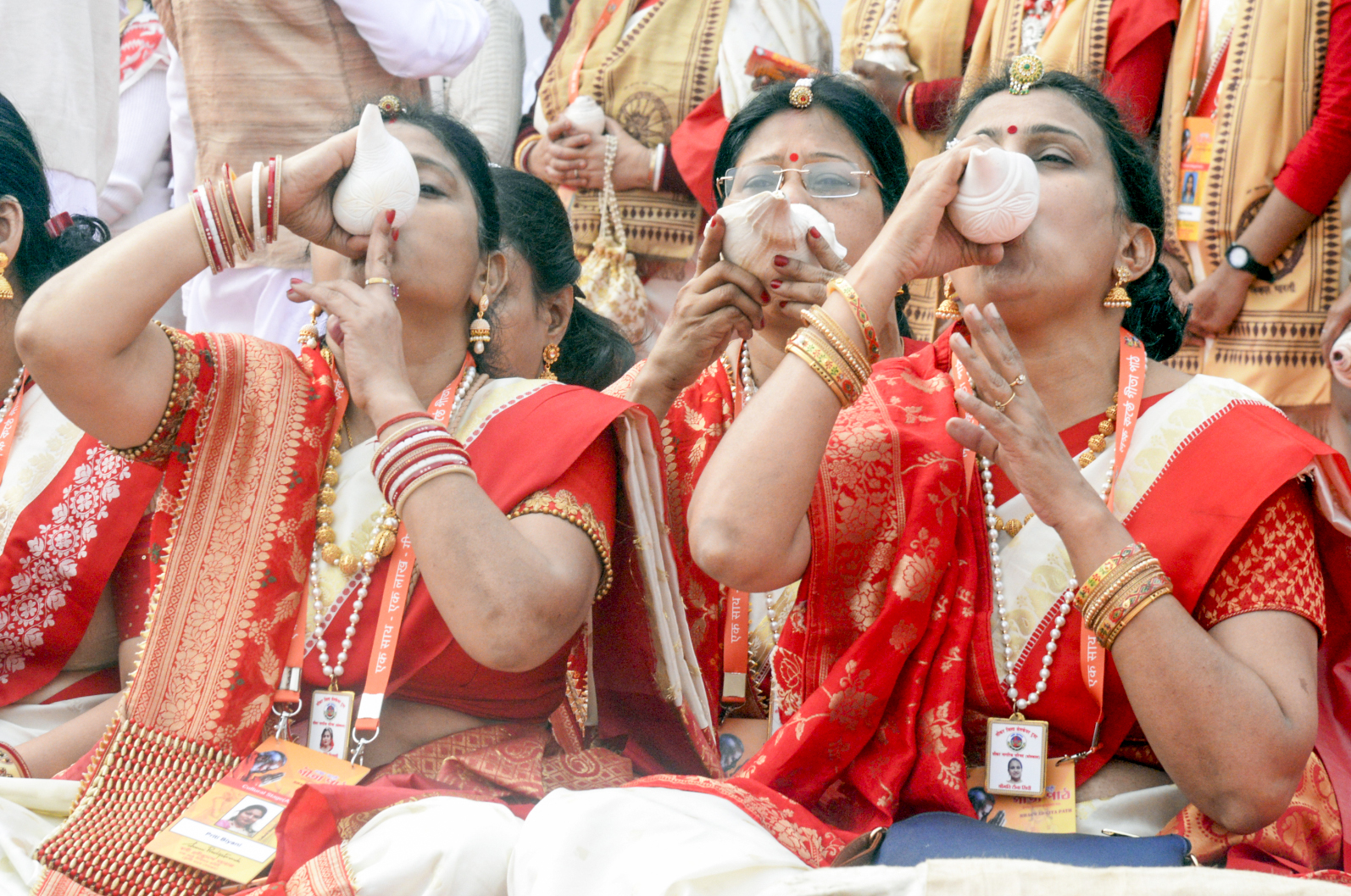 Women celebrating Durga Puja in Kolkata
Women celebrating Durga Puja in Kolkata
The city of Calcutta (Kolkata) was founded in 1686 as part of the British Raj's expansion efforts. On August 24 of that year, Job Charnock arrived in the village of Sutanuti as a representative of the British East India Company to establish a factory. During the British Era, Kolkata (Calcutta) became a colonial city. The British East India Company developed Calcutta as a city by establishing an artificial riverine port in the 18th century CE.
Kolkata was the capital of British India until 1911 when the capital was relocated to Delhi. As the capital of British India until 1911, it experienced rapid growth in the 19th century, becoming the second most important city in the British Empire after London and the financial capital of British India. Kolkata's development also led to the fusion of Indian philosophies with European tradition, shaping its distinctive culture. It is renowned for its revolutionary history, from the Indian to Naxalite movements. Despite its historical significance, the city faced urbanization challenges from the 1930s, serving as an example of the struggles in developing nations.
The Hindus, which is the dominant community in the city are mostly worshippers of the goddess Kali, Durga Lakshmi, Saraswati, and god Ganesha. There are around 30,000 Anglo-Indians in West Bengal alone, living in Bow Barracks, Ripon Street, Elliot Road, and Park Street, though the numbers have greatly dwindled as many have migrated to Western countries. During the British rule in India, the offspring of unions between British and Indian parents from the 17th century onward gave rise to the Anglo-Indian community. Although a small segment of the population, this emerging ethnic group played a notable role and found representation in specific administrative positions. Famed for their love for singing, dancing, partying, and exuberance, friendly nature, and known to be great educationalists, they stand apart with their cuisine, dress, speech which is English as their mother tongue, and religion Christianity.
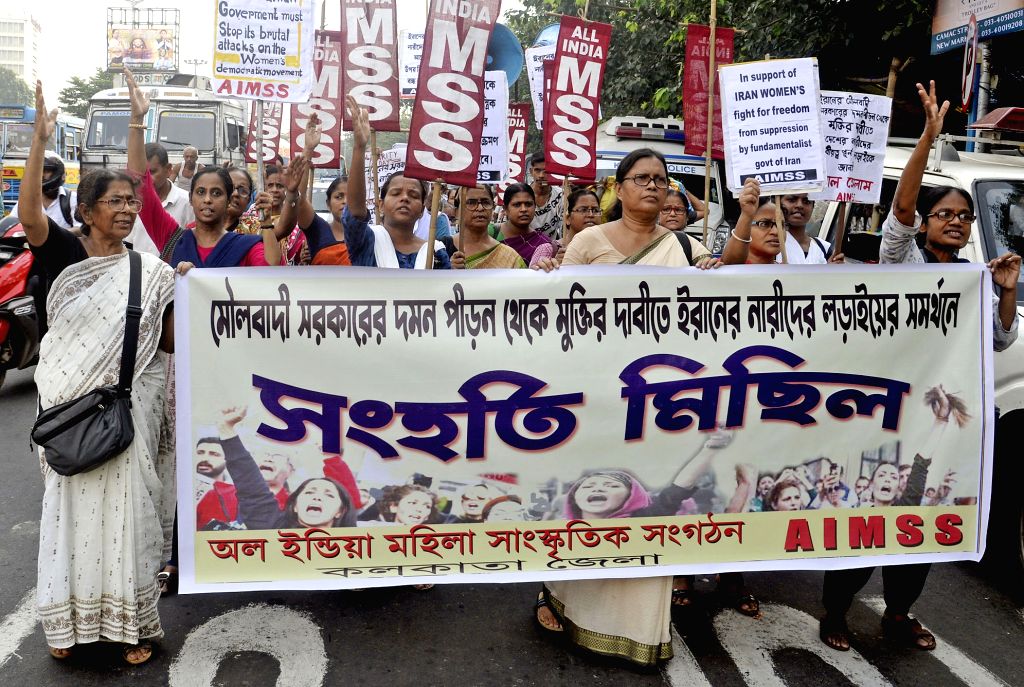 Bengali women protesting against death of Iranian activist Masha Amin
Bengali women protesting against death of Iranian activist Masha Amin
The Jewish history in Kolkata, formerly Calcutta, India, dates back to the late 18th century when adventurous Baghdadi Jewish merchants from Aleppo and Baghdad settled in the burgeoning capital of the British Raj. This community, a central hub for the Judeo-Arabic-speaking Baghdadi Jewish trading Diaspora in Asia, experienced rapid growth in the early 19th century. Primarily comprised of migrants from Baghdad and Aleppo, the community was historically led by a prosperous merchant elite engaged in the trade of cotton, jute, spices, and opium, with prominent families from Baghdad and Aleppo playing key roles.
In India, the Hakka Chinese arrived nearly two hundred years ago in Kolkata down the Hooghly towards the sea near Budge Budge and was later named Achhipur - after Tong Achew the first Chinese trader to land in India. The Hakka Chinese, hailing from South China were the early immigrants. During the early 20th century, many fled China and came to India to escape its civil war and conflict with Japan seeking refuge in Kolkata which is a 2125 kilometre distance. Presently, Kolkata is home to a mere 2,000 individuals of Chinese origin. The enduring influence of their culture is evident throughout the Tiretta (also known as Tiretti) Bazar and Tangra neighbourhoods.
This influence manifests in street food vendors, Taoist temples, community clubs, and the annual lion dances that mark the Lunar New Year. Kolkata has two Chinatowns—the original one at Tiretta Bazar established in the 1800s and a later settlement in Tangra from the early 1900s. The Chinese have coexisted closely with other communities since the beginning and learned to speak Bengali, Hindi, and English fluently. They worked hard and rose to be a wealthy community.
On visiting Kolkata this December 2023, it was stunning to discover that the outskirts of Kolkata have become the heart of the city in the last five years with wider roads, the new Eco Park, bridges, trees shading roads, and Jasmine hedges planted all over the city exuding their exotic aromas.
As I strolled along Park Street, a captivating flutist's melody caught my attention, prompting me to pause on the sidewalk and listen. After purchasing one of his wooden flutes, he introduced himself, saying, "My name is Raju." When I inquired further, he smiled and shared, "I live in Howrah and travel to Park Street daily...I earn about Rs. 500 a day." He told me he was originally from Uttar Pradesh. What struck me about Raju was his peaceful smile that graced his remarkable talent of playing the most heavenly music with his flute. Raju did not beg anyone to buy his flutes but enchanted his audience like the Pied Piper of Hamelin by playing one of them prompting us to buy them!
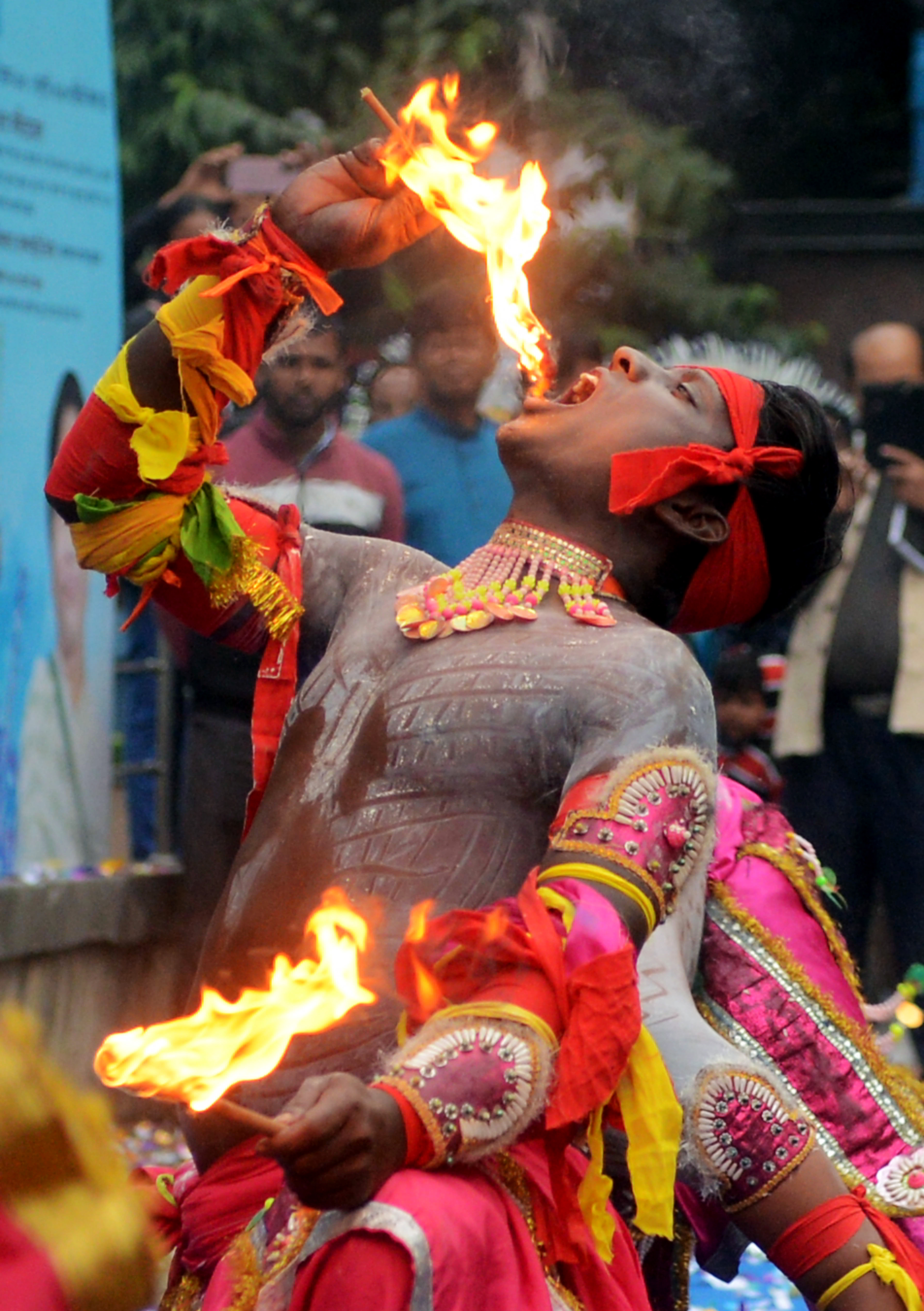 A tribal artists perfoming in Kolkata
A tribal artists perfoming in Kolkata
A fruit seller standing with his cart by Victoria Memorial, an elite spot of the city was selling huge plates of the juiciest fruit salads for just Rs. 50. This is the city where one can buy the most reasonably priced food, cheapest clothes, and the finest material where the elite, rich and poor live together in amiable harmony, giving and sharing, living in affordable rents and accommodating people of all ethnicities and cultures.
Kolkatans are at ease with all people, which was why it was so easy for the Iranians to feel at ease, and the Chinese and other Orientals to feel at home. Kolkata rocks the cradle of all cultures and religions crooning a melodious song in a city of dominantly Hindus, Muslims, Christians, Sikhs, Parsees, Buddhists, Bengalis, Anglo-Indians, Chinese, Punjabis, Sindhis, Tibetans, Jews, Nepalese, Nagas, Mizos, Americans, British, Koreans, Africans, and a host of other ethnicities who live together in harmony.
ALSO READ: Why does Kolkata spell the most magical Christmases In India?
Kolkata is labeled the "Cultural Capital of India," "The City of Processions," "The City of Palaces," and the "City of Joy, and this is why the city with its geography, location, deep diverse roots, and rich history. With such a rich history of mixed diversities, the city cannot help but exude its magnetism as the most warmly blanketed cosmopolitan city in India welcoming all people.
Rita Farhat Mukand is an independent writer in West Bengal
